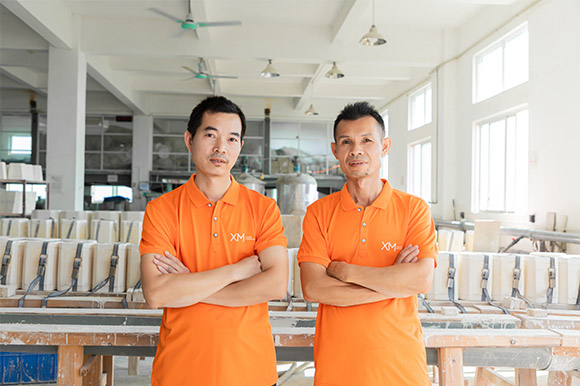
Our master sculptors pour in a generous amount of slip or liquid clay inside the mold and leave it to dry, creating the blank canvas for our ceramic tableware project. The plaster mold slowly takes in the slip, adapting the delicate form of the mold and creating a layer of clay that gradually thickens over time. This process could take at least 1 hour, depending on the target thickness.
Excess slip is poured out from the mold which leaves a hollow shape within the mold, with the excess slip recycled for the next batch. After removing any residual slip from the top and checking if firm enough, the clay is taken out of the mold and transferred to a drying room for overnight drying. Our team is capable of producing up to 25,000 pieces of mold weekly.


We use small knives to remove excess seams that remained from the previous process through a process called fettling. After the seams are taken out, we go over the ceramic piece using natural sea sponges to remove further impurities and prepare them for decoration. The sponging process leaves the ceramic piece with a smoother and more desirable finish that will allow the decoration to adhere more to the surface.